|
|
| |
|
|
| |
|
|
|
|
| |
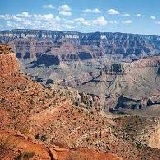 Travel
America Travel
America
Learn before you travel. This section of Fun Easy
English focuses on facts and other cool stuff about
your favorite U.S. state. This is great English
reading practice. This page focuses on the state of
Minnesota. |
 Hey
if you cannot understand something on this page, Hey
if you cannot understand something on this page,
then use the Fun Easy English
dictionary
(opens in a new window) |
|
|
 Minnesota Minnesota
The "Land of 10,000 Lakes," Minnesota got its
nickname because there are more than 12,000 lakes
throughout the state. Its name comes from the Dakota
(Sioux) word for the Minnesota River's "sky-tinted
waters." The Minnesota Territory was formed in 1849
from what had been part of the Northwest Territory,
and Minnesota joined the Union in 1858. The state
flower is the pink and white lady's slipper, and the
capital is St. Paul. |
|
Minnesota
State Flag
The present state flag of Minnesota was adopted in
1957.
Minnesota's flag is royal blue with the state seal displayed
in the center. Three dates are woven into a wreath
surrounding the seal which represent the year of statehood
(1858); the year Fort Snelling was established (1819); and
the year the original flag was adopted(1893).
The nineteen stars arranged outside the wreath symbolize the
fact that Minnesota was the 19th state to enter the Union
after the original thirteen. The largest star represents the
North Star and Minnesota.
The state motto on the seal is French, "L’étoile du Nord"
meaning "the star of the North" (the basis for Minnesota's
nickname as "The North Star State"). The seal has much
symbolism:
The sun on the western horizon signifies the flat plains
covering much of Minnesota.
The native American on horseback is riding due south and
represents the native American heritage of Minnesota.
The tools: the native's horse and spear, and the pioneer’s
axe, rifle, and plow represent tools that were used for
hunting and labor.
The stump is a symbol of the importance of the lumber
industry in Minnesota.
The Mississippi River and St. Anthony Falls are depicted to
note the importance of these resources in transportation and
industry.
The cultivated ground and the plow symbolize the importance
of agriculture in Minnesota.
Trees: beyond the falls, three pine trees represent the
state tree and the three great pine regions of Minnesota–St.
Croix, Mississippi, and Lake Superior. |
|
Source:
State Symbols USA |
|
|
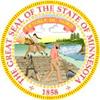 Minnesota
State Facts Minnesota
State Facts
Picture: state seal of Minnesota |
|
State Capital |
St. Paul |
|
Nickname |
North Star State / Gopher State / Bread and Butter
State |
|
Motto |
L'Etoile du Nord (The star of the north.) |
|
Statehood |
May 11, 1858 (32th) |
|
Origin of Name |
Based on the Dakota Sioux Indian word for
"sky-tinted water," referring to the Minnesota River
or the state's many lakes. |
|
Largest Cities |
Minneapolis, Saint Paul, Bloomington, Duluth,
Rochester |
|
Border States |
Iowa, North Dakota, South Dakota, Wisconsin |
|
Area |
79,617 sq. mi., 14th largest |
|
State Bird |
Common Loon |
|
State Flower |
Pink and white lady's-slipper (cypripedium reginae) |
|
State Tree |
Red Pine (pinus resinosa) |
|
State Song |
Hail! Minnesota |
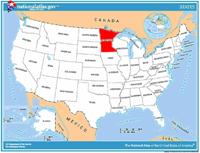 Travel
and tourism site for Minnesota - This state travel and
territorial tourism site provides ideas for your vacations,
meetings, and more. Travel
and tourism site for Minnesota - This state travel and
territorial tourism site provides ideas for your vacations,
meetings, and more. |
|
|
Minnesota Stories |
|
|
Minnehaha Steamboat
How can you extend a streetcar line onto a lake? With a steamboat,
of course.
The restored steamboat in the picture was originally one of a fleet
of vessels that extended the streetcar lines of the Twin Cities --
Minneapolis and St. Paul -- out into Lake Minnetonka. Built in 1905
by the Twin City Rapid Transit Company to serve new communities
around the lakeshore, the boats were designed to resemble
streetcars. They were painted canary yellow, red, and green, the
same colors as streetcars, and the seats and benches below decks
also matched the streetcars.
As the automobile became the favored mode of transportation,
ridership on the boats declined, and they were scuttled in 1926 in
the deeper waters of the lake. Scuttling means to cut or open a hole
in a ship's hull to sink the ship. Fifty-four years later, the
Minnehaha was brought to the surface for restoration. And, on May
25, 1996, the Minnehaha sailed on her maiden voyage from Excelsior
to Wayzata, a festive occasion that signaled her return to Lake
Minnetonka. |
|
|
Remembering the Little Red Schoolhouse
Can you imagine going to a school that has only one room and where
all the kids, no matter how old, are in the same class? That was the
situation in many schools across the country, especially in rural
(country) communities.
Becker County, a rural farm community in Minnesota, decided to get
together and create a historical record of the one-room schoolhouse
experience. The citizens included photographs of old school
buildings, interiors, and students. They also found antique school
texts, teaching materials and state examinations for the teaching
certificate, a teacher's bell and an old-fashioned lunch pail -- all
from the first half of the 20th century. Together these materials
preserve a nearly vanished educational experience.
Today, only a single one-room schoolhouse remains in Minnesota, in
Northwest Angle, at the northernmost tip of the state and one of the
coldest places in the lower 48 states. The Angle School has about a
dozen students, and children often arrive by boat from nearby and
not so nearby islands. During the winter, some students travel daily
to school on a snowmobile. Would you like to go to a one-room
school? |
|
|
Laura Ingalls Wilder Pageant
Have you read any of the Little House books by Laura Ingalls Wilder
or seen the TV show "Little House on the Prairie"?
Laura Ingalls Wilder, well-known author of the Little House series
of books, was born in the big woods of Wisconsin. When she was 7,
she and her family traveled by covered wagon and moved to the
prairie land of Walnut Grove, Minnesota. Her family was one of the
pioneer families who settled there, following the Homestead Act of
1862, which encouraged Americans to travel west and settle.
Today, the people of Walnut Grove celebrate Wilder's books every
July with the Laura Ingalls Wilder Pageant. The Pageant is a
family-oriented outdoor drama with all of Laura Ingalls Wilder's
Little House on the Prairie book characters. An actress playing a
70-year-old Laura narrates the story, reflecting on her life in
Walnut Grove during the 1870s. If you've never read any of the
Little House books, you should, because you can learn a lot about
life in America during the 1870s. |
|
|
Spam Festival
Have you ever eaten Spam? Do you know what it is?
Austin, Minnesota, is home to the Hormel Company's plant that
produces Spam, a canned meat product popular with Americans. Created
in 1937, some of the first commercials aired on TV were for Spam.
Spam even has a mascot -- Spammy, the miniature pig. In 1991, for
its 100th anniversary, Hormel Foods opened the First Century Museum.
The exhibit of Spam memorabilia quickly became the most popular. In
the United States alone, 3.6 cans of Spam are consumed every second,
making it the number one product in its category (canned meat) by
far. On the island of Guam, more than eight cans of Spam are
consumed by every person each year.
More than 60 years after it was first produced, Spam is still
enormously popular. More than 5 billion cans have been sold! |
|
|
Anoka, Minnesota: The Halloween Capital of
the World
Did you know that Halloween has a capital? Anoka, Minnesota, calls
itself the "Halloween Capital of the World," as it is one of the
first cities in the United States to put on a Halloween celebration
that discourages people from playing tricks or causing trouble.
In 1920, a weeklong celebration was started in Anoka in an effort to
take the trick out of trick-or-treat. The Grand Day Parade includes
a Mass Band, made up of bands from four high schools. Another
featured event is the Gray Ghost 5K Run, inspired by sightings of
Bill Andberg, a marathon runner in his 70s whose gray-clad ghostly
figure can often be seen running through a local cemetery.
There are many competitions during the week, including a pumpkin
bake-off and one for best Halloween house decorations. Most
participants wear their Halloween costumes. Do you suppose people
wear the same costumes all week long? |
|
|
Ironworld Discovery Center
Why would a state need millions of trees? In Minnesota it was
because much of the land had been mined for iron ore and was
stripped bare of trees and other forms of nature.
So, in the 1930s, during the Great Depression, a federal government
program called the Civilian Conservation Corps planted more than 25
million trees in Minnesota. More than 4,000 men between the ages of
18 and 25 were hired for the project. In addition to the trees, the
Corps workers built hundreds of miles of hiking trails, roads, and
canoe ports that citizens have come to love.
Even though they planted trees to restore the land, Minnesota wanted
to preserve the history of its iron ranges, so it established the
Ironwood Discovery Center in Chisholm. Open-pit mining was a big
business in Minnesota until the mid-1970s. In 1900, the Mesabi Iron
Range was the largest iron-mining area in the world, and during
World War II, Minnesota produced more than 75 percent of the iron
used in the war effort. As the iron deposits ran out, another form
of mining replaced it, which extracts iron in a complicated
mechanized process. The end of the open pits also spelled the end of
a way of life for many Minnesotans. The Discovery Center helps
people learn about that period. |
|
|
Logging in Minnesota
Think about how much wood you could fit into a train's freight car.
Imagine how many wood logs you would need to fill up 240,000 cars.
That's a lot of cars, but that's just how many were filled in
Minnesota in 1905.
Historically, logging has been an important part of Minnesota's
economy. Clearing the massive conifer forests of Minnesota continued
into the first decades of the 20th century, when production peaked
in 1905. In fact, so much lumber was sawed in the state that year
that it would have filled about 240,000 freight cars! During the
boom period of 1890 to 1910, lumber companies harvested lumber
valued at $1 billion in Minnesota.
Each winter season, logging crews set up camps in the forest areas.
The crews were made up of relatively poor and unskilled workers.
Many of them were recent immigrants from northern Europe who were
barely making a living. Workers received low wages and toiled long
hours under dangerous conditions.
Technological advances changed and industrialized logging. Horses
were replaced with small tractors, and loggers began to use
gasoline-powered chain saws. Lumber was sent to paper mills that
were built along the Mississippi, Rainy, and St. Louis rivers. By
the 1970s, the industrialization of an agricultural industry was
complete. |
|
Source:
Library of Congress |
|
 National
Forests, Parks, and Monuments of Minnesota National
Forests, Parks, and Monuments of Minnesota
The following is a description of national
forests, parks, and monuments in the state
of Minnesota. If you plan to visit or live
in Minnesota for awhile then you should
definitely plan to visit some of these
fantastic places. |
|
|
|
National Forests |
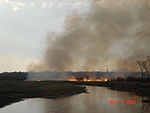 Chippewa Chippewa
With 1,300 lakes and ponds, 925 mi (1,489
km) of rivers, and 440,000 acres (180,000
ha) of wetlands, there are many
opportunities for boating and fishing in
this forest. There are over 180 nesting
pairs of bald eagles as well as Canada lynx,
and sandhill cranes here. |
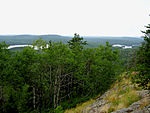 Superior Superior
Superior National Forest includes the
Boundary Waters Canoe Area Wilderness, which
has over 1,500 mi (2,400 km) of canoe
routes, 1,000 lakes, and 2,200 designated
campsites. Eagle Mountain, the highest point
in Minnesota at 2,301 ft (701 m), is also in
the forest. |
|
|
|
National Parks |
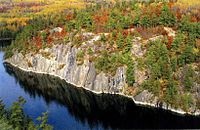 Voyageurs Voyageurs
This park protecting four lakes near the
Canada–US border is a site for canoeing,
kayaking, and fishing. The park also
preserves a history populated by Ojibwe
Native Americans, French fur traders called
voyageurs, and gold miners. Formed by
glaciers, the region features tall bluffs,
rock gardens, islands, bays, and several
historic buildings. |
|
|
|
National Monuments |
 Grand
Portage Grand
Portage
The Grand Portage itself is an 8.5-mile
(13.7 km) footpath which bypasses a set of
waterfalls on the Pigeon River near Lake
Superior. The region was a vital trade route
and center of fur trade activity as well as
an Anishinaabeg Ojibwe heritage site. |
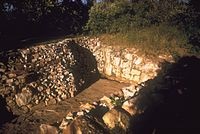 Pipestone Pipestone
This monument preserves traditional
catlinite quarries used to make ceremonial
pipes, vitally important to traditional
Plains Indian culture. The quarries are
sacred to the Sioux and Lakota people and
are historically neutral territory where
enrolled citizens of all tribes can quarry
the stone. |
|
|
|
|
|
|
|
|
|
|
|
|
Cool America |
 About the U.S.A. About the U.S.A.
About the U.S.A. is an American
Studies reader that examines the customs, government, and history of the
United States of America. The text provides a wealth of information on U.S.
geography and history; the roles of local, state, and federal government;
national holidays and symbols; the Constitution; and citizenship. The book,
which was written for intermediate to advanced learners of English, contains
a range of activities for language students to practice listening, speaking,
reading, and writing. (opens to a new PDF window)
Great English reading
practice. |
 About
America About
America
Learn about the fascinating history and government of
the United States of America. Lessons include content on
American Government, American History, and Integrated
Civics. Handouts with interactive games and
student-centered activities encompass all four language
skills: speaking, listening, reading, and writing.
Great English reading practice for
beginning to intermediate students. |
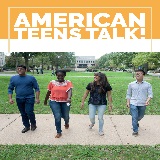 American Teens Talk! American Teens Talk!
Americans Teens Talk! is a collection of interviews of
American high school students. Each interview is accompanied by vocabulary
notes and discussion questions. The interviews in American Teens Talk! give
learners a view into the lives of adolescents in the U.S. Through the
written format of the interviews, learners are able to increase their
vocabulary, practice their reading and listening skills, engage in
discussions, and learn more about U.S. culture. These
interviews come with audio programs.
Great English listening and
reading |
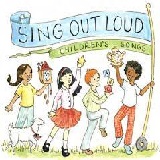 Sing Out Loud Children's Songs Sing Out Loud Children's Songs
Sing Out Loud Children's Songs includes popular children's songs in the U.S.A. Posters accompany the
individual Sing Out Loud Children's Songs. These
songs come with audio programs.
Great English listening and reading
practice. |
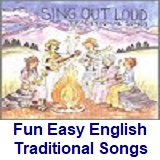 Sing Out Loud Traditional Songs Sing Out Loud Traditional Songs
The Sing Out Loud Traditional Songs
collection contains 13 traditional American folk songs and song lyrics.
Listen to the songs online, read the lyrics, and collect the posters that
accompany the songs. These
songs come with audio programs.
Great English listening and reading
practice. |
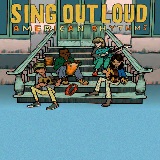 Sing Out Loud American Rhythms Sing Out Loud American Rhythms
Do you love music? Want to use it
to learn English? Check out the hip-hop inspired song "Peace" from Sing Out
Loud American Rhythms. American Rhythms includes a variety of musical genres
from many different artists in the U.S.A. These songs will appeal to teens
and young adults. These
songs come with audio programs.
Great English listening and reading
practice. |
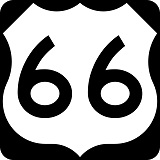 Route
66 - Famous American Road Route
66 - Famous American Road
U.S. Route 66 (US 66 or Route 66), also known as the Will Rogers Highway, the
Main Street of America or the Mother Road, was one of the original highways in
the U.S. Highway System. The highway, which became one of the most famous roads
in the United States, originally ran from Chicago, Illinois, through Missouri,
Kansas, Oklahoma, Texas, New Mexico, and Arizona before ending in Santa Monica,
California, near Los Angeles, covering a total of 2,448 miles (3,940 km). It was
recognized in popular culture by both the hit song "(Get Your Kicks on) Route
66" and the Route 66 television show in the 1960s. |
Route 66: The Highway That's the Best
(Beginner - Listening)
A video lesson which shows you an interesting place in America.
The English is
spoken at 75% of normal speed.
Great English listening practice.
This video shows travel along Route 66, the most famous road in
America. |
Chicago: The Start of Route 66
(Beginner - Listening)
A video lesson which shows you an interesting place in America.
The English is
spoken at 75% of normal speed.
Great English listening practice.
This video shows travel along Route 66, the most famous road in
America. |
Going West for Decades on Route 66
(Beginner - Listening)
A video lesson which shows you an interesting place in America.
The English is
spoken at 75% of normal speed.
Great English listening practice.
This video shows travel along Route 66, the most famous road in
America. |
Arizona: The Spirit of Route 66
(Beginner - Listening)
A video lesson which shows you an interesting place in America.
The English is
spoken at 75% of normal speed.
Great English listening practice.
This video shows travel along Route 66, the most famous road in
America. |
Route 66 California: The End of the Trail
(Beginner - Listening)
A video lesson which shows you an interesting place in America.
The English is
spoken at 75% of normal speed.
Great English listening practice.
This video shows travel along Route 66, the most famous road in
America. |
Ten Must-See Route 66 Attractions
(Beginner - Listening)
A video lesson which shows you an interesting place in America.
The English is
spoken at 75% of normal speed.
Great English listening practice.
This video shows travel along Route 66, the most famous road in
America. |
Four Famous Foods On Route 66
(Beginner - Listening)
A video lesson which shows you an interesting place in America.
The English is
spoken at 75% of normal speed.
Great English listening practice.
This video shows travel along Route 66, the most famous road in
America. |
International Tourists Drawn to Route 66
(Beginner - Listening)
A video lesson which shows you an interesting place in America.
The English is
spoken at 75% of normal speed.
Great English listening practice.
This video shows travel along Route 66, the most famous road in
America. |
|
|
|
|
Search Fun Easy English |
|
|
|
|
|
|
|
|
|
|
|
|
|
|
|
About
Contact
Copyright
Resources
Site Map |